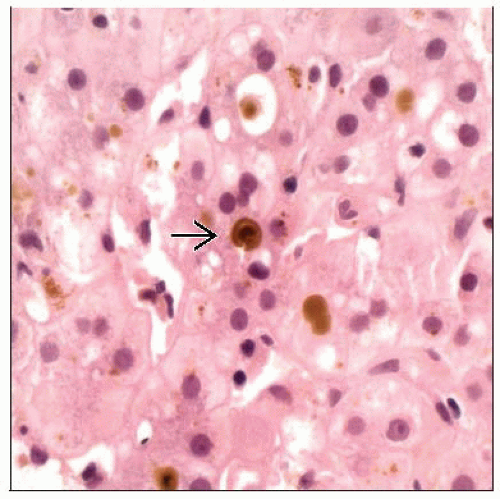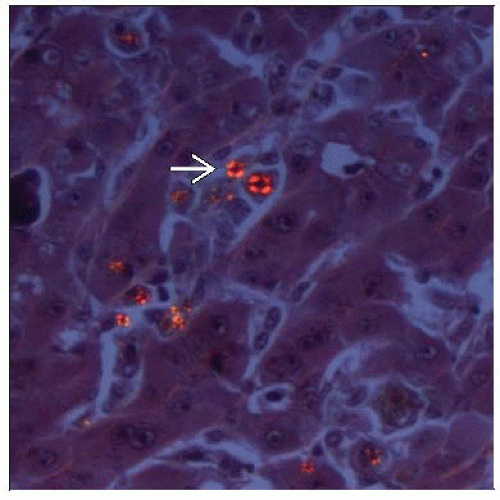Porphyrin Metabolism Disorders
Joseph Misdraji, MD
Key Facts
Terminology
Heterogeneous group of inherited and acquired disorders of heme biosynthesis
PCT and EP are associated with hepatic pathology
Etiology/Pathogenesis
Sporadic PCT is primarily an acquired disorder
Precipitating factors include HCV, HFE mutations, alcohol, and drugs
EP due to partial deficiency of ferrochelatase activity
Clinical Issues
Photosensitivity
Variable liver disease
Microscopic Pathology
PCT: Mild to moderate siderosis, steatosis, changes typical of HCV
EP: Cholestasis; red-brown aggregates of protoporphyrin in canaliculi, hepatocytes, Kupffer cells
Ancillary Tests
PCT
EM
Polarization microscopy
Ferric ferricyanide stain
Laboratory testing for porphyrins
EP
EM
Polarization microscopy
Laboratory testing for porphyrins
TERMINOLOGY
Abbreviations
Porphyria cutanea tarda (PCT)
Erythropoietic protoporphyria (EP)
Synonyms
EP has also been called erythrohepatic protoporphyria and protoporphyria
Definitions
Heterogeneous group of inherited and acquired disorders of heme biosynthesis
PCT and EP are associated with hepatic pathology
“Hepatic” and “erythropoietic” porphyrias are characterized by accumulation of intermediates in liver and erythroid cells, respectively
ETIOLOGY/PATHOGENESIS
Genetic Disorder
Sporadic PCT is associated with partial deficiency of uroporphyrinogen decarboxylase activity, only in liver
Familial PCT is due to deficiency of uroporphyrinogen decarboxylase activity in all tissues
EP is due to partial deficiency of ferrochelatase activity
Sporadic Disease
Sporadic PCT is primarily an acquired disorder
Occurs in patients without genetic defects although partial deficiency of uroporphyrinogen decarboxylase may contribute
Associated with genetic conditions that increase iron absorption (e.g., HFE mutations)
Approximately half of all patients have hepatitis C virus infection (HCV)
Other contributory substances or conditions include alcohol, HIV infection, estrogen use, smoking, low vitamin C, and carotenoid status







